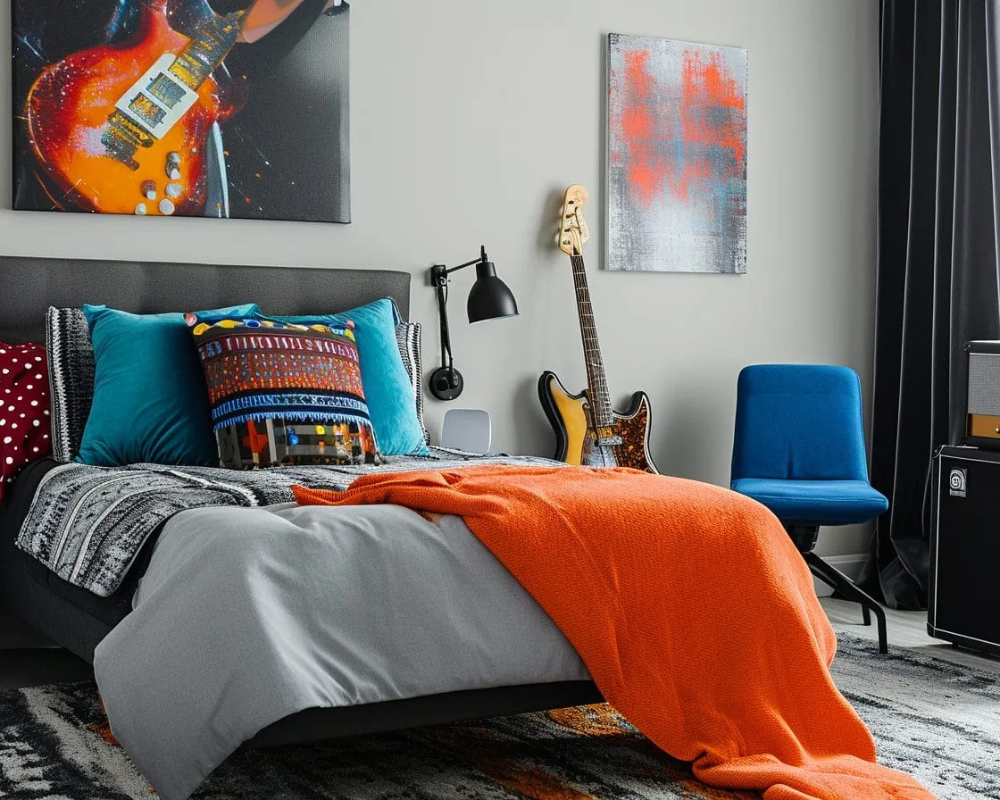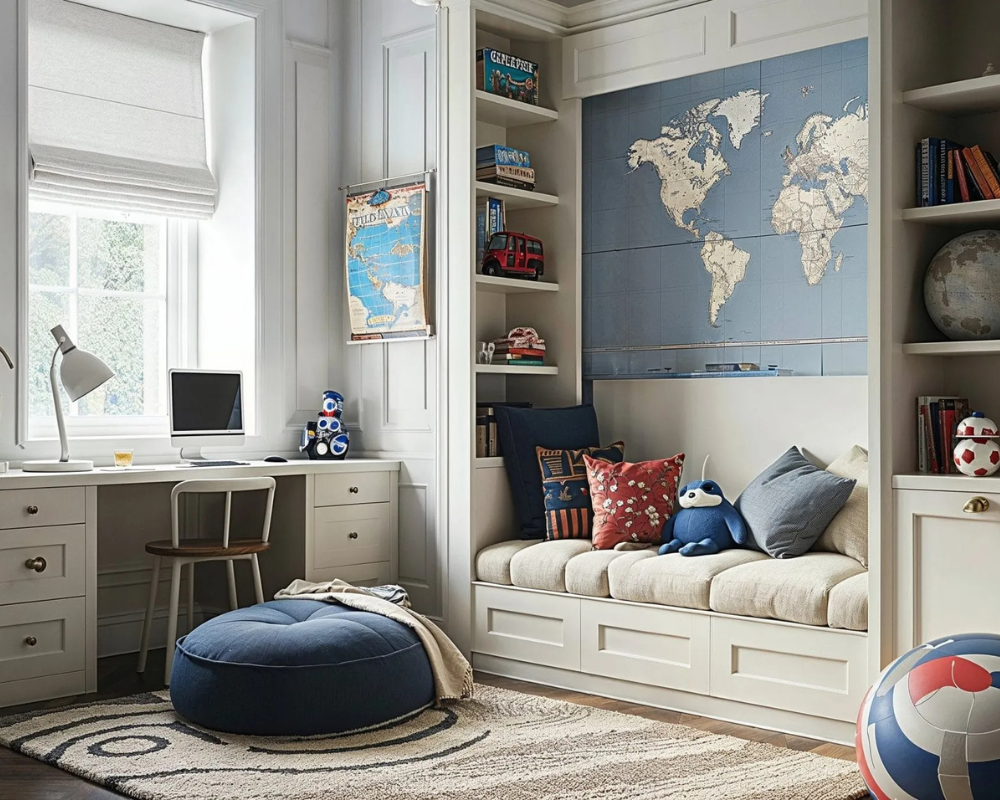Designing a child’s room that truly resonates with their personality can be a delightful challenge. Forget generic themes; the goal is to create spaces where little musicians, budding engineers, fantasy enthusiasts, and all other imaginative minds feel completely at home. Here are some trending design approaches that prioritize individuality and spark creativity, with an appeal that extends beyond childhood.
1. Personalized Twin Spaces

For shared rooms, move beyond exact copies. Start with matching beds and bedding to create unity, but then introduce subtle variations in pillow arrangements, artwork, or lamp styles on each side. This allows each child’s space to have its own distinct feel while maintaining overall harmony, avoiding a sterile, symmetrical look.
2. The Enchanting Hideaway

Transform a bunk bed into a captivating zone by adding a pitched structure behind the top bunk. This architectural detail gives the sleeping area depth and encourages imaginative play, turning it into a lookout, castle tower, or ship cabin without relying on temporary decals or limiting themes. Strategic use of color, like a deep navy, adds depth, while angled lines give the upper bed a defined shape and presence.
3. A Single Spark of Playfulness

Introduce one impactful, sculptural element, such as a slide, swing, or climbing rope, to dramatically shift the room’s atmosphere. A well-designed slide, for example, can act as a visual focal point while its color and finish keep it grounded, almost like a piece of interactive art that blends seamlessly even in neutral or minimalist settings.
4. Subtle Sports Inspiration

Incorporate sports themes without being overwhelming. Use clear but understated references like soccer ball patterns, dynamic silhouettes, or jersey-inspired striped curtains, all within a limited color palette. Consider introducing patterns in small details, such as a checked bed skirt or houndstooth pillows, for a touch of thematic texture.
5. An Indoor Adventure Zone

or active children, design a room that encourages movement. Integrate elements like ropes, wall grips, and gym rings seamlessly into the room’s layout. Keep surfaces clear, use cool colors, and ensure an open floor plan to facilitate activity. This design philosophy makes movement an inherent part of the room’s identity.
6. Robot-Inspired Dreams

Any theme can work when integrated thoughtfully into the room’s style and scale. Oversized, black-framed robot prints, for instance, feel sophisticated rather than childish. When using a bold theme, anchor the space with a weighty color palette, such as deep blue walls and denim upholstery, allowing brighter accents like orange to provide pops of contrast.
7. Harmonious Musical Notes

Let a musical interest resonate through scale and material choices. Select a central element, like an instrument or a favorite framed poster, and build the room’s aesthetic around its tone. Use a mix of textures, such as flannel with denim. To avoid visual clutter, repeat patterns subtly through details like stitching or pillows rather than on large surfaces. Feel free to use bold colors selectively to ground the rest of the room.
8. Versatile Built-In Nooks

A built-in nook offers a multi-functional space integrated into the wall. Start with a bench and add cushions, varied pillows, and soft lighting to create a cozy daybed that doubles as a reading corner. Flank it with open shelves for accessible book and basket storage. This feature is adaptable for a wide age range.
9. An Inspiring Atelier

For a young artist’s room, use open shelving to display materials, making them easily accessible and encouraging tidiness. Opt for soft-sided, low storage that children can reach independently. Choose scaled-down, sturdy, neutral furniture to let the child’s artwork take center stage. Incorporate wall pieces that echo the child’s own artistic style or color palette to create a sense of ownership.
10. A Space for the Observant Child

Create a room with sculptural forms that are understated rather than loud. Use warm, low-contrast tones to allow the shapes to be the primary focus. Install shallow, open, and evenly lit shelving so that each displayed object has significance. This type of design supports a child who appreciates order and engages with their environment thoughtfully.

